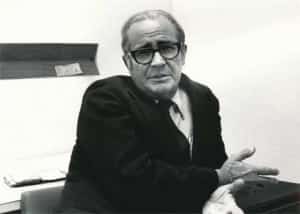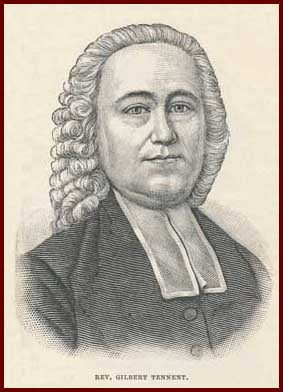We are pleased and honored to have a guest post today from Dr. Carl W. Bogue, who served as pastor of the Faith Presbyterian Church (PCA), Akron, Ohio, 1975-2007. Dr. Bogue received his M.Div. from the Pittsburgh Theological Seminary (1965), where he was mentored by Dr. John Gerstner, and he maintained a close friendship with Dr. Gerstner until the latter’s death in 1996. He has graciously allowed us to post here his recollections of the life and ministry of a dear saint greatly used by the Lord in the building of His kingdom.
 This day, November 22, 2014, is the 100th anniversary of the birth of Dr. John H. Gerstner – pastor, professor, author, and friend of thousands to whom he ministered in so many ways throughout his life. I heard him preach at our church and at a youth conference as a teenager; in seminary he was an intellectual anchor as well as an inspiration; in grad school his love of Jonathan Edwards motivated me to do my doctoral dissertation on a central but much neglected theme in Edwards’s writing and preaching, and when I was ordained and installed at the beginning of my pastoral ministry, he graciously honored me by preaching the sermon for the occasion, challenging me “not to be ashamed of the Gospel.” Now that I am “officially retired,” one of my great encouragements is that a new generation is beginning to discover “the good doctor.” I hope it would not seem inappropriate for me to include here, an obituary I wrote in 1996 for my congregation, but which also appeared in a couple publications.
This day, November 22, 2014, is the 100th anniversary of the birth of Dr. John H. Gerstner – pastor, professor, author, and friend of thousands to whom he ministered in so many ways throughout his life. I heard him preach at our church and at a youth conference as a teenager; in seminary he was an intellectual anchor as well as an inspiration; in grad school his love of Jonathan Edwards motivated me to do my doctoral dissertation on a central but much neglected theme in Edwards’s writing and preaching, and when I was ordained and installed at the beginning of my pastoral ministry, he graciously honored me by preaching the sermon for the occasion, challenging me “not to be ashamed of the Gospel.” Now that I am “officially retired,” one of my great encouragements is that a new generation is beginning to discover “the good doctor.” I hope it would not seem inappropriate for me to include here, an obituary I wrote in 1996 for my congregation, but which also appeared in a couple publications.
John H. Gerstner: Defender of the Faith
On Sabbath afternoon, March 24, 1996, Dr. John H. Gerstner went to be with the Lord. For most readers little more needs to be said. You know the man, and you know the respect and affection so many of us had for him. Nothing I can say here will adequately express what this man of God meant to me personally. But I also know that my loss is his gain, for all the glory of God and the beauty of the Savior which he so comprehensively taught to his students is now his to behold and enjoy without any of the limitations brought about by sin.
Dr. Gerstner’s life began in Tampa, Florida. His childhood years were spent in Philadelphia where he graduated from high school in 1932. It was that summer while visiting Philadelphia College of the Bible that he was wonderfully converted to the Gospel. That fall he began his studies at Westminster College. Gerstner next attended Westminster Theological Seminary at the time when many of its early giants were present. It was during the time at seminary that he met Edna Suckau, who was to become Mrs. Gerstner. They have three children.
After receiving a masters degree from Westminster Seminary, he pursued his doctoral studies at Harvard University where in 1945 he was awarded a Ph.D. Dr. Gerstner received further education at the Universities of Pittsburgh, Temple, Pennsylvania, Boston, Zurich, Barcelona, and Oxford. He served in the pastorate for a brief period prior to accepting a position as a professor at Pittsburgh-Xenia Theological Seminary, later to become Pittsburgh Theological Seminary.
 It would be difficult to begin to sum up the academic activity of Dr. Gerstner, and even more difficult to express the thousands of lives he has touched through his preaching and teaching ministry. In a Festschrift published in 1976 to honor Dr. Gerstner, a bibliography compiling his writings takes up a full 16 pages. In the 20 years since many additions could be made, including the whole new medium of audio and video tapes. His three volume work on Jonathan Edwards is more than the culmination of a life-long project; it is a labor of love.
It would be difficult to begin to sum up the academic activity of Dr. Gerstner, and even more difficult to express the thousands of lives he has touched through his preaching and teaching ministry. In a Festschrift published in 1976 to honor Dr. Gerstner, a bibliography compiling his writings takes up a full 16 pages. In the 20 years since many additions could be made, including the whole new medium of audio and video tapes. His three volume work on Jonathan Edwards is more than the culmination of a life-long project; it is a labor of love.
The volume written to honor Dr. Gerstner was appropriately entitled, Soli Deo Gloria. One of my happy privileges was to have been invited to be a contributor to that volume. The opening sentence of my article was: “The student of John H. Gerstner is never adequately designated as a ‘former student.’” I never stopped learning from this “teacher of Israel,” and he surely never ceased to be the consummate teacher. Only those who know this first hand can adequately comprehend the loss many of us feel with his passing.
On various occasions I have heard Dr. Gerstner express his indebtedness to his beloved mentor from college, Dr. John Orr. Perhaps more than any other human being, Dr. Orr shaped the thinking of my beloved professor. Early in my ministry, Dr. Gerstner invited me to attend a special celebration at Westminster College to honor Dr. John Orr. Apart from being honored that Dr. Gerstner would invite me to anything, I was also working with a very forceful self-imposed guide in such matters. When Gerstner requested or even suggested something, it had, for all practical purposes, the force of a command with me. But on this occasion it was more that just an invitation. His words were approximately these: “Carl, if I have been a significant influence in your life and vocation (and he knew this was the case), if you are indebted to me at all, then you need to be there to honor Dr. Orr.” I had never met Dr. Orr, but typical of Gerstner’s humility, he would pass along my praise of him to the one who helped shape him for his teaching ministry.
In announcing Gerstner’s death to my congregation, I made this comparison: “Many of you are often very kind in your praise of me. I feel very unworthy of such praise, and I thank God for our many years together. I am not trying to put myself in the similar position or stature as that of Dr. Gerstner. But I would humbly draw this parallel. If I have been, by God’s grace, permitted any usefulness in your life, if you see an approximation of faithfulness to the Word of God, a zeal for the purity of the Church, a desire to proclaim the whole counsel of God – if I have been of any value to you, it would not be inappropriate for you to be thanking God for the ministry of Dr. Gerstner which happens to be through me. Humanly speaking, my claim on you is for you to join with me in praise to God for giving us such a soldier of the cross.”
I never had a better teacher; I never heard a better preacher, and to the extent that we may tentatively judge such things, I never witnessed greater piety. And it is at this point that the good doctor would gently remind us, that all the praise is to be given for the righteousness of Christ, imputed to us, by which we are permitted to enter into glory.
Rev. 14:13 And I heard a voice from heaven, saying, “Write, ‘Blessed are the dead who die in the Lord from now on!’” “Yes,” says the Spirit, “that they may rest from their labors, for their deeds follow with them.”


![Rev. Gilbert Tennent [5 February 1703 – 23 July 1764]](https://thisday.pcahistory.org/wp-content/uploads/2013/02/tennentGilbert.jpg)